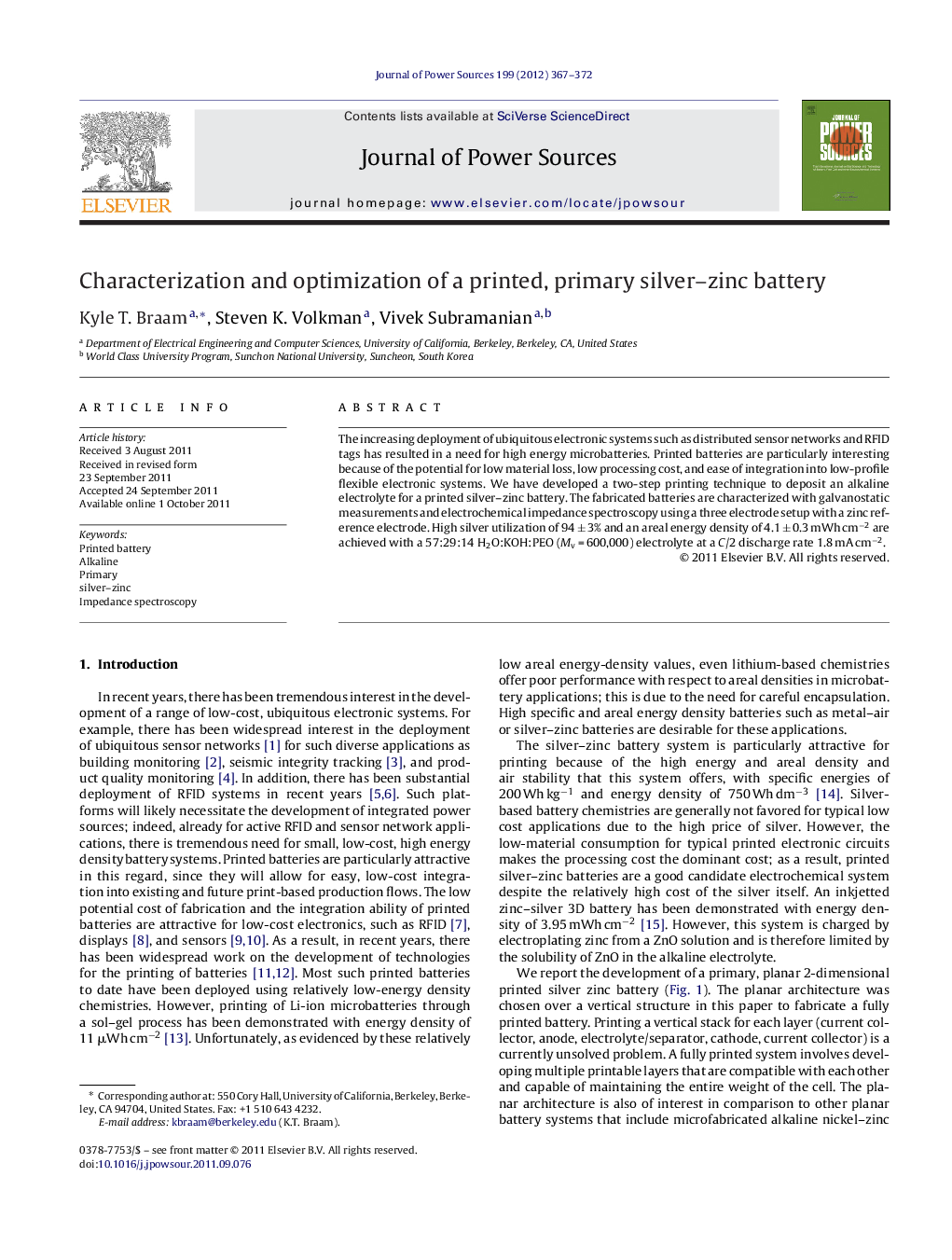| Article ID | Journal | Published Year | Pages | File Type |
|---|---|---|---|---|
| 1284636 | Journal of Power Sources | 2012 | 6 Pages |
The increasing deployment of ubiquitous electronic systems such as distributed sensor networks and RFID tags has resulted in a need for high energy microbatteries. Printed batteries are particularly interesting because of the potential for low material loss, low processing cost, and ease of integration into low-profile flexible electronic systems. We have developed a two-step printing technique to deposit an alkaline electrolyte for a printed silver–zinc battery. The fabricated batteries are characterized with galvanostatic measurements and electrochemical impedance spectroscopy using a three electrode setup with a zinc reference electrode. High silver utilization of 94 ± 3% and an areal energy density of 4.1 ± 0.3 mWh cm−2 are achieved with a 57:29:14 H2O:KOH:PEO (Mv = 600,000) electrolyte at a C/2 discharge rate 1.8 mA cm−2.
► Printed silver–zinc primary with PEO electrolyte. ► High energy densities of 4.1 ± 0.3 mWh cm−2 at current densities of 1.8 mA cm−2. ► Impedance spectroscopy modeling of planar battery.
